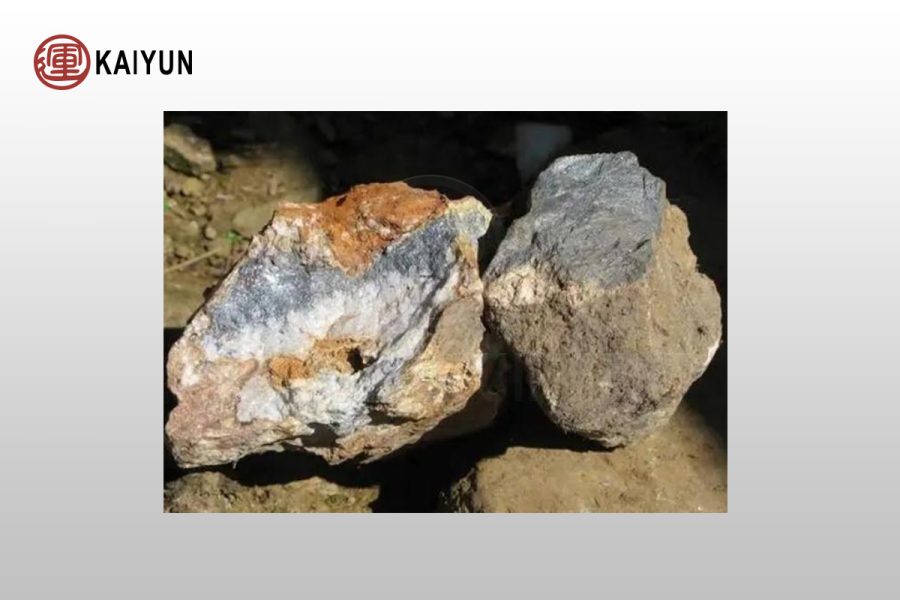The beneficiation process of antimony oxide needs to select a suitable method according to the properties of the ore (such as mineral composition, embedded particle size, associated impurities, etc.). The core process includes crushing and screening, gravity separation/flotation separation and tailings treatment. The following are specific processes and technical points.

Ore preparation
Crushing and screening
Coarse crushing
Use a jaw crusher to crush the ore to 100-200mm to reduce the subsequent processing load.
Fine crushing
Use a cone crusher or hammer crusher to further reduce the ore particle size to below 30mm.
Screening and grading
Use a vibrating screen to divide the ore into three levels according to the particle size: 0-2mm, 2-8mm, and 8-30mm, so as to facilitate subsequent particle size classification.
Grinding
For the ore that needs to be floated, a ball mill is used to grind the finely crushed ore to below 0.074mm to ensure that the mineral is fully dissociated.
Sorting and processing
1.Gravity separation method
Applicable scenarios
Applicable to antimony oxide ores with coarse-grained embedding or significant density differences.
Equipment and process
Jig
Use the difference in the settling velocity of minerals in the vertical water flow for sorting, suitable for 8-30mm coarse-grained ores, and quickly obtain coarse concentrates.
Shaking table
Process -0.25mm fine-grained ores, and improve the concentrate grade by the difference in the inclined water flow trajectory.
Process advantages
Low energy consumption, no reagent pollution, but the recovery rate is affected by the particle size of the ore embedding.
2.Flotation method
Applicable scenarios
Applicable to fine-grained embedding or complex associated ores.
Reagent system
Activator
Sodium sulfide (Na₂S) forms a sulfide film on the surface of antimony oxide to improve the floatability of the mineral.
Collector
Fatty acids (such as oleic acid), 25 black medicine or butyl xanthate.
Frother
Pine alcohol oil or pine oil to adjust the bubble stability.
Process design
Adopting the flotation process of “one roughing, three fines, two sweeping”, the concentrate grade is increased to more than 99.9% through roughing, concentrating and sweeping steps.
Before flotation, the pH of the slurry needs to be adjusted to a weakly alkaline environment of 7-9 to inhibit gangue minerals.
3.Combined process
Gravity selection-flotation combination
First, coarse antimony ore is recovered by gravity selection, and the tailings are then flotated to treat the fine part, and the comprehensive recovery rate can reach more than 80%.
Hand selection-flotation combination
Artificial pre-selection to remove large gangue to reduce the subsequent processing load, suitable for small mines.
Tailings and environmental protection treatment
Tailings reselection
Through the shaking table gravity selection and flotation of tailings, fine antimony oxide is recovered to reduce resource waste.
Wastewater treatment
Use sedimentation tank + filtration equipment to purify wastewater, so that it can be reused in production or meet the discharge standards.
Dust control
Equip dust collectors in the crushing process and install ventilation systems in the workshop to reduce dust pollution.
Technological innovation and optimization
Reagent optimization
Dynamically adjust the reagent ratio according to the properties of the ore, such as adding CuSO₄ or Pb(NO₃)₂ to enhance the activation effect.
Equipment upgrade
Use high-efficiency and energy-saving ball mills to reduce energy consumption.
Introduce automated control systems (such as PLC) to achieve precise process control.
Environmental protection technology
Develop low-toxic collectors and wastewater recycling technologies to reduce environmental impact.
Antimony oxide beneficiation process combines advanced mineral processing methods with environmental protection measures to improve the comprehensive recovery rate of antimony oxide ore resources while reducing the impact of production on the environment.